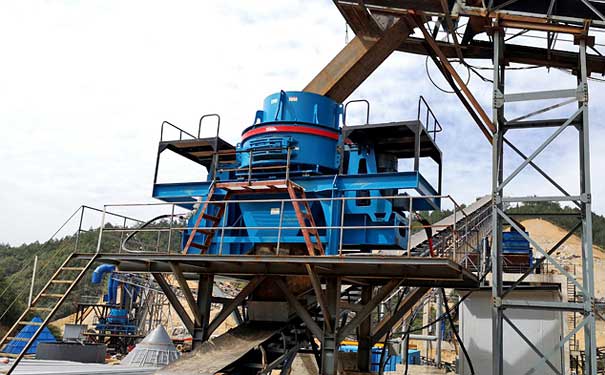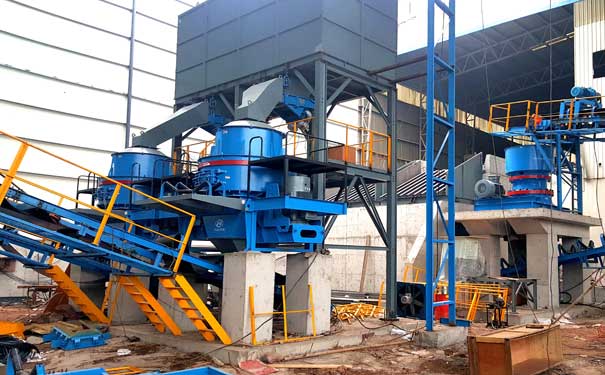The sand making machine plays an irreplaceable role in the gravel crushing production line, and is currently the most effective, practical and reliable sand making equipment. The sand making machine is suitable for the crushing and shaping of soft or medium hard and extremely hard materials. It is widely used in a variety of metal and non-metal mines, refractory materials, abrasive ceramic raw materials, building materials and high-speed and high-speed railway construction, water conservancy and hydropower construction, and civil gravel bones. The fine crushing and shaping operations of minerals and rocks in industries such as material production, especially for medium-hard, extra-hard or abrasive materials, such as sandstone, granite, basalt, silicon carbide, emery, alumina, magnesia, etc. are more superior than other equipment. "Material is blocking” in the use of the sand making machine will greatly affect the crushing efficiency of the sand production line. Then, what are the reasons for the blockage of the sand making machine? What matters need attention during the operation?
Reasons for blockage of sand making machine
1. The conveying capacity of the conveyor exceeds the crushing capacity: When the conveying capacity of the conveyor does not match the crushing capacity of the crusher, the materials behind are quickly poured into the crusher when the material is not crushed, causing blockage when the crushing is not timely.
2. Severe wear of vulnerable parts: The equipment is mainly broken by hammers, and at the same time, the hammer is also a vulnerable part of the equipment. It will wear out during a period of time. If it is not found in time, when it comes to hard materials, the hammer head cannot be completely broken, so that the materials cannot be discharged in time. At this time, new materials enter, and the material blocking phenomenon will occur.
3. Improper tightness of the V-belt: The production process of this equipment uses a V-belt to transmit power to the sheave and crush the stone. When the triangular drive belt is loose, it will cause slipping, and the sheave will rotate instead of driving the sheave. The material cannot be crushed by the normal crushing force, and cannot be crushed in the crushing cavity, which will cause blockage.
4. The voltage is too low: unstable voltage will cause uneven and discontinuous feeding of the sand making machine. If the feeding is uneven, when the feeding speed is higher than the discharge speed, blockages will be formed in the crushing cavity and the discharge port. Broken products cannot be discharged in time, and materials are continuously added to the equipment, which will eventually cause the equipment to block the material, and in severe cases, the equipment will stop under heavy load.
5. Improper adjustment of the discharge opening: In the production process of the crusher, the material discharge rate is too slow or the discharge opening is blocked, which may cause obstacles to the discharge of the sand making machine. In this way, a large amount of materials are blocked in the crushing cavity.
Preventive measures for sand making machine blockage
1. When feeding, pay attention to the change of the ammeter pointer. Generally speaking, if the feed amount is too large, the deflection angle of the ammeter pointer will be large, and the motor will be burned out if overloaded for a long time. In this case, the material door should be reduced or closed immediately, or the feeder can be increased to control the feed volume, so as to prevent the sand making machine from blocking the material.
2. Improper matching with the conveying equipment will cause the discharge pipe to weaken or block when there is no wind. Therefore, before designing the sand production line, avoid output mismatch between the equipment and prevent blockage.
3. During the production of the sand making machine, replace the broken and severely aged hammer blades regularly, and check the screen regularly. If it is found to be aged, the screen holes are closed and broken, and replaced in time. The water content of the crushed materials should be less than 14%. These measures can reduce blockage and improve the crushing efficiency of the equipment.



